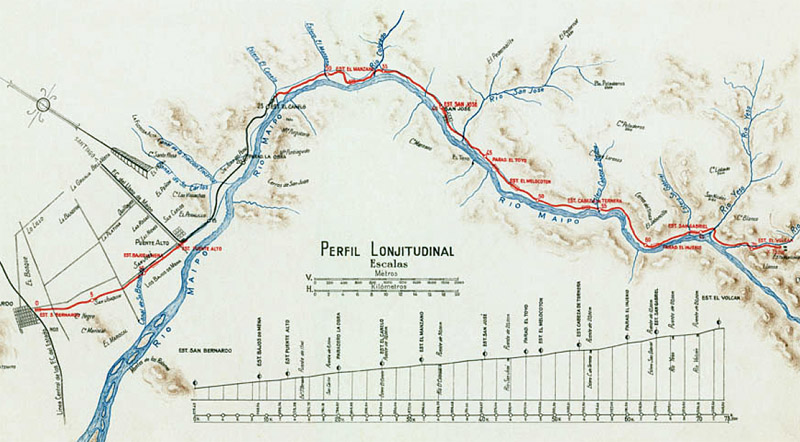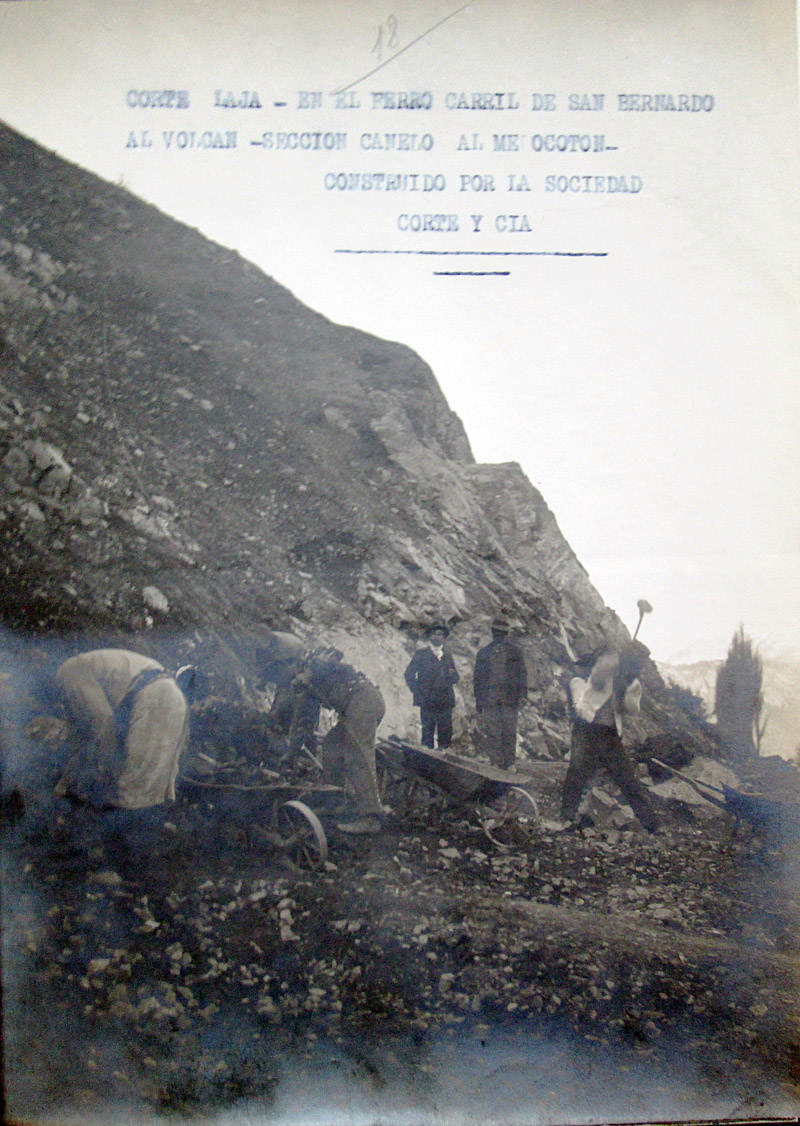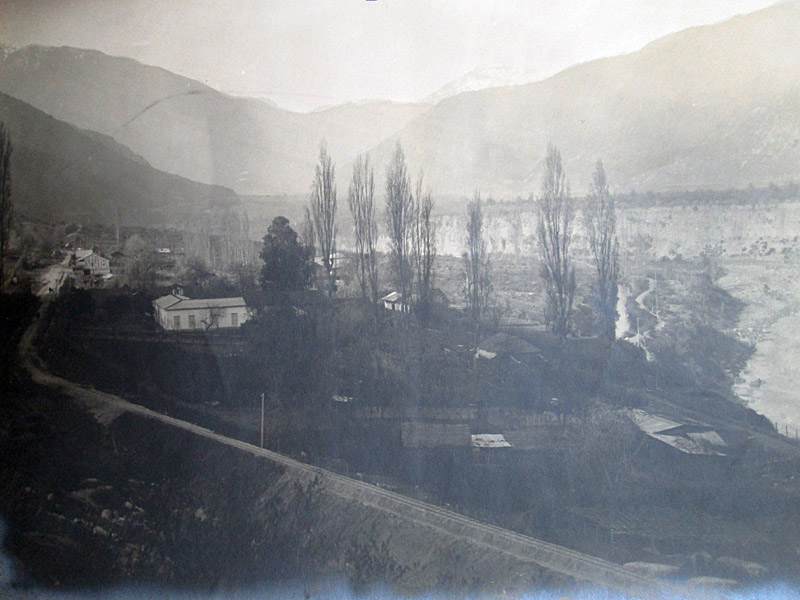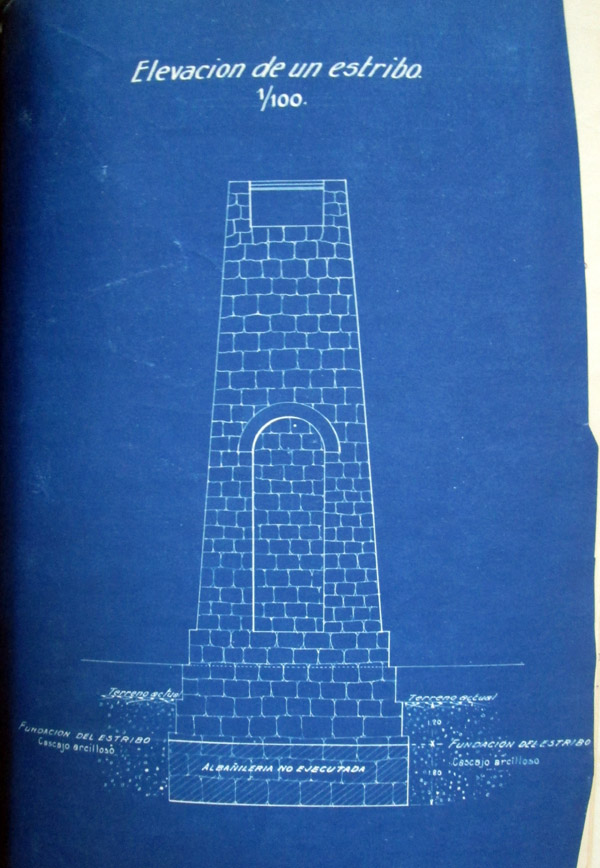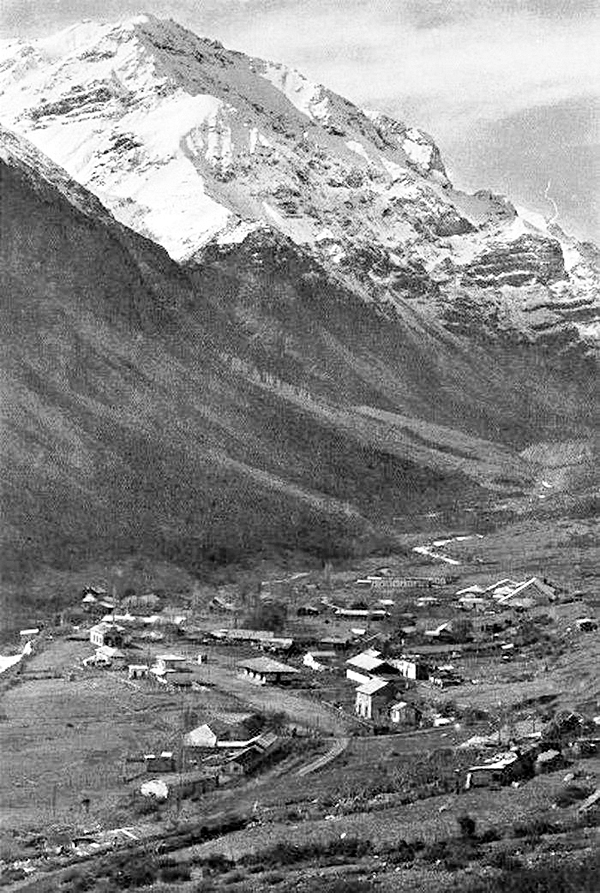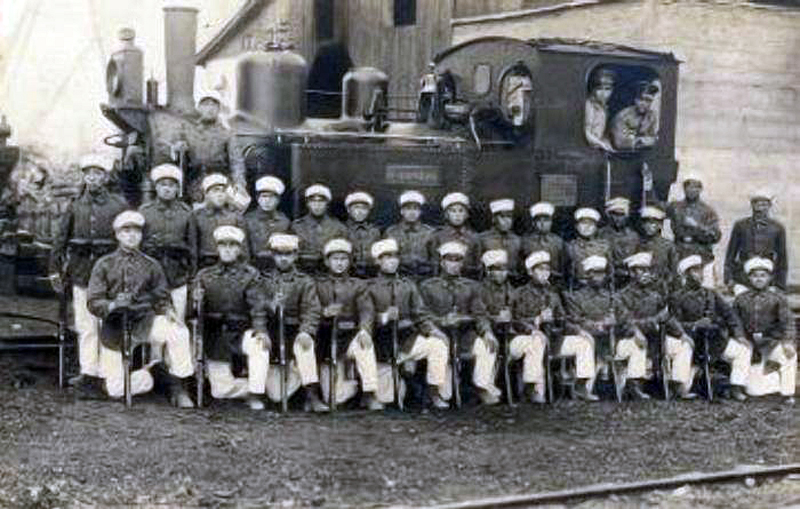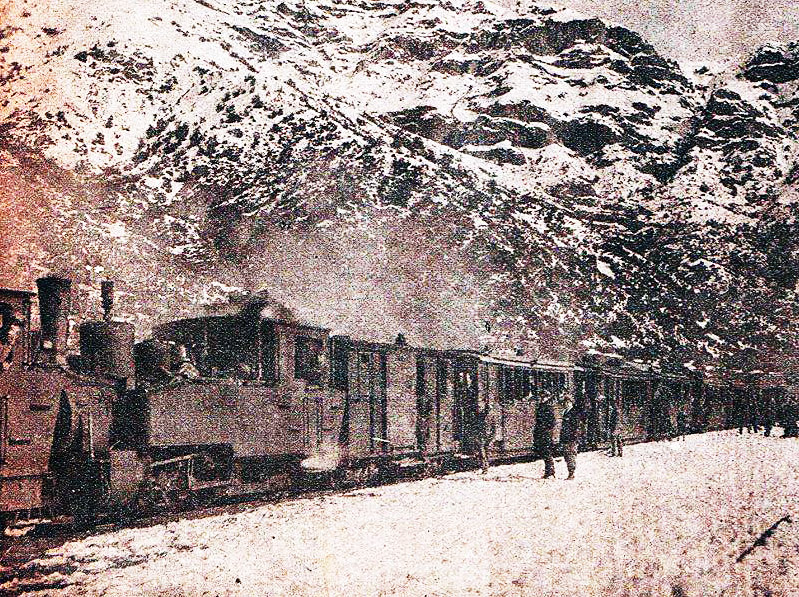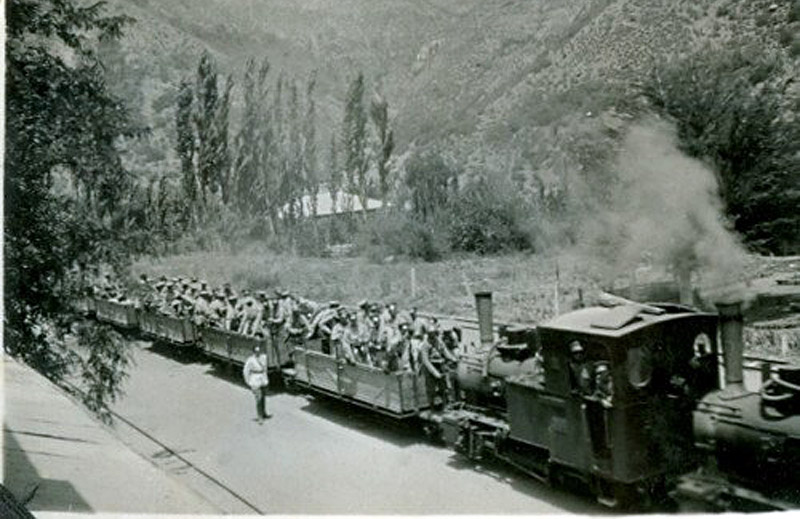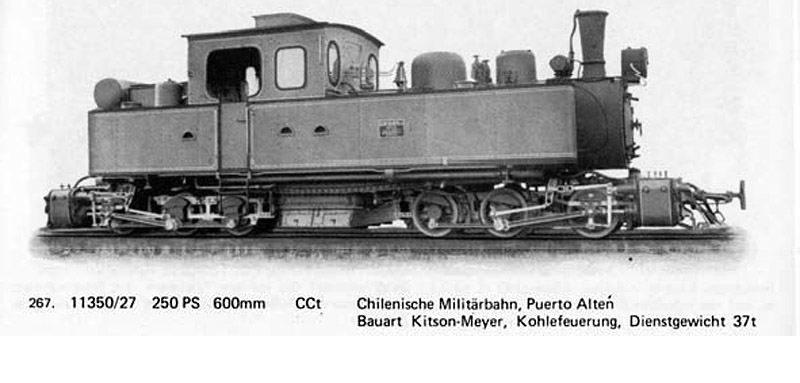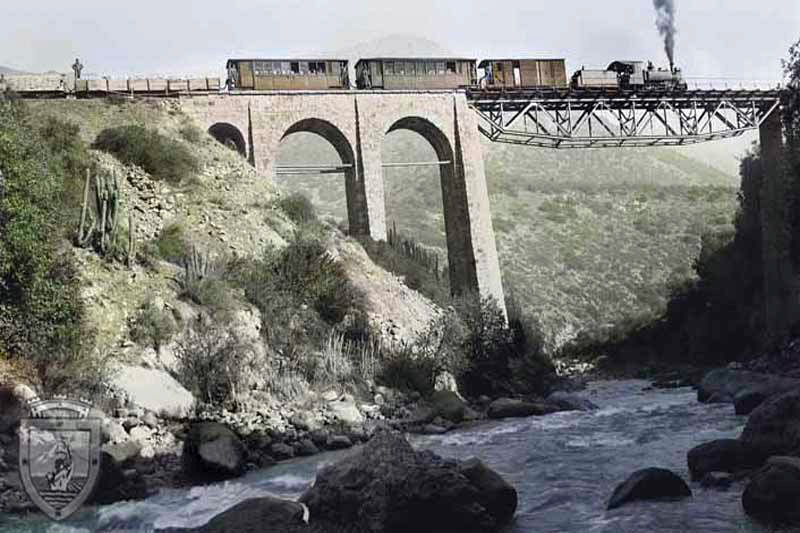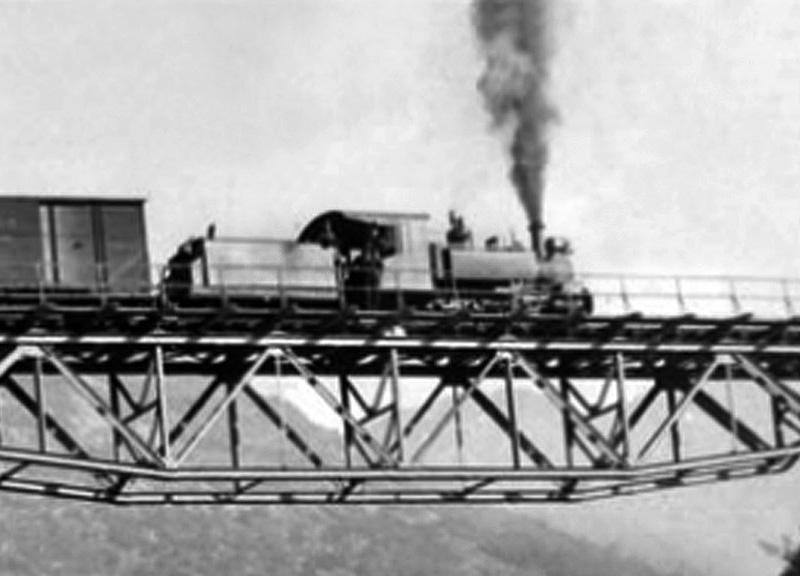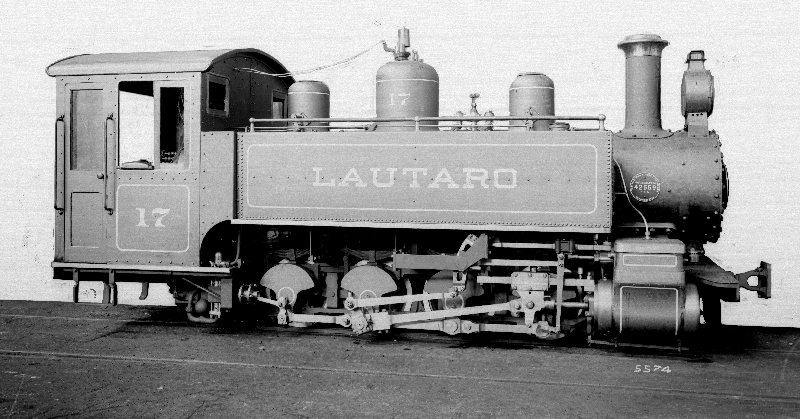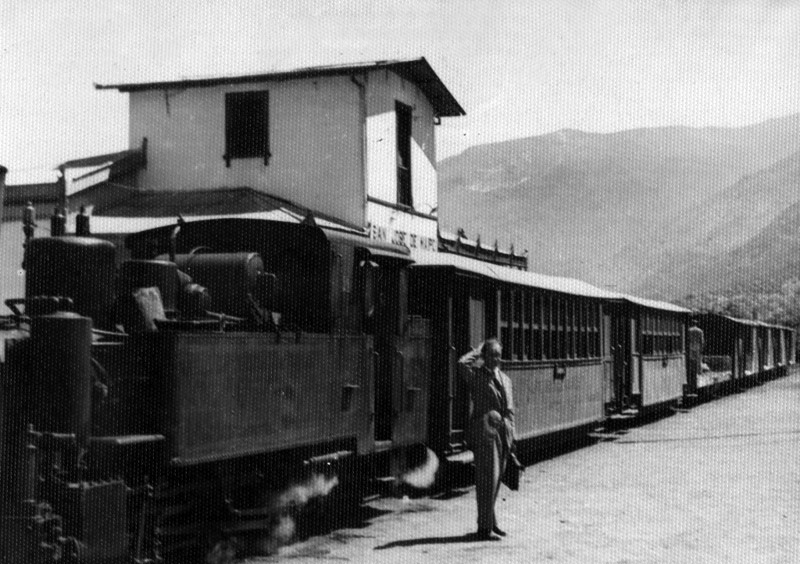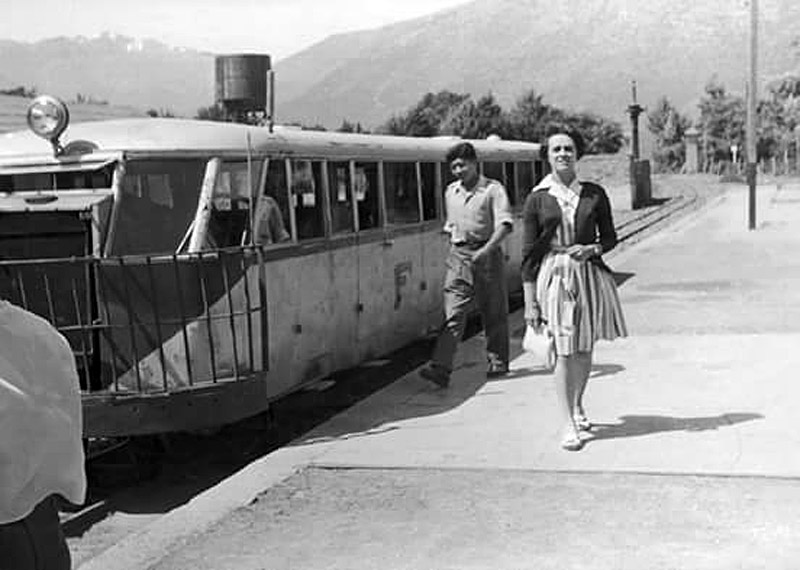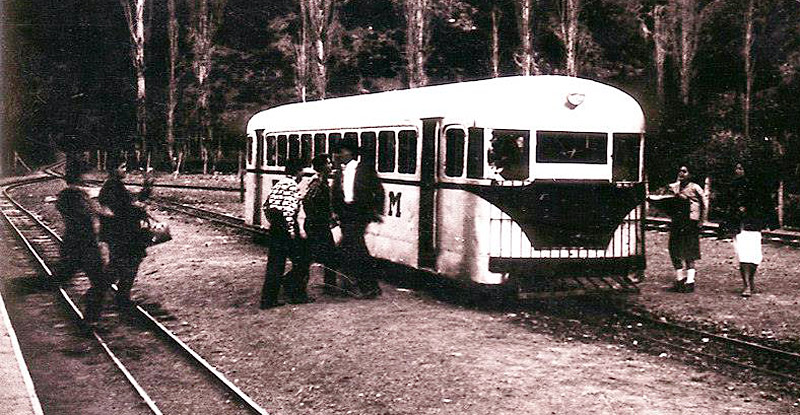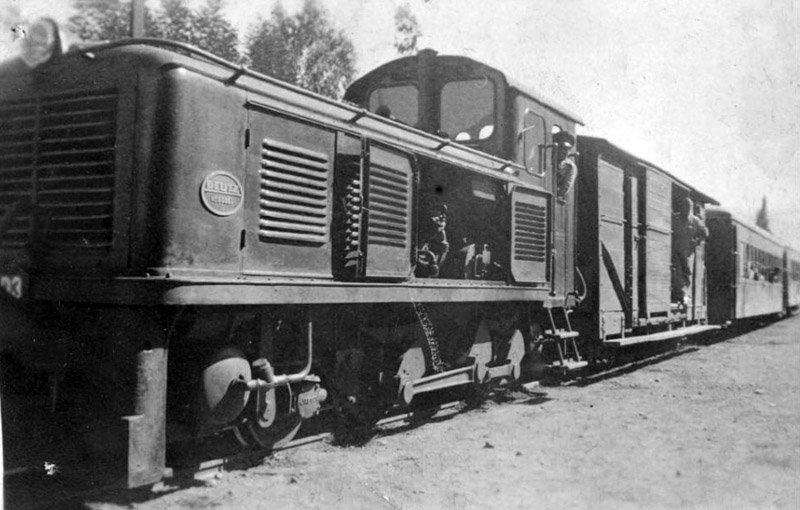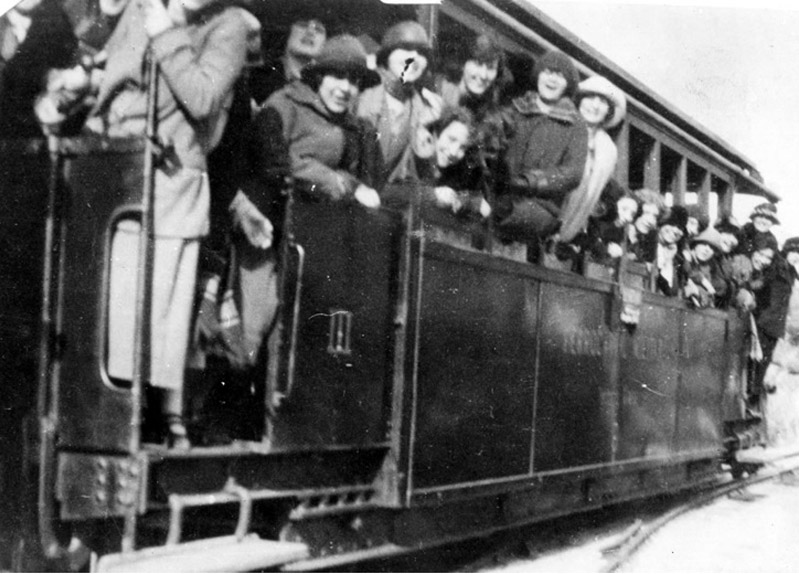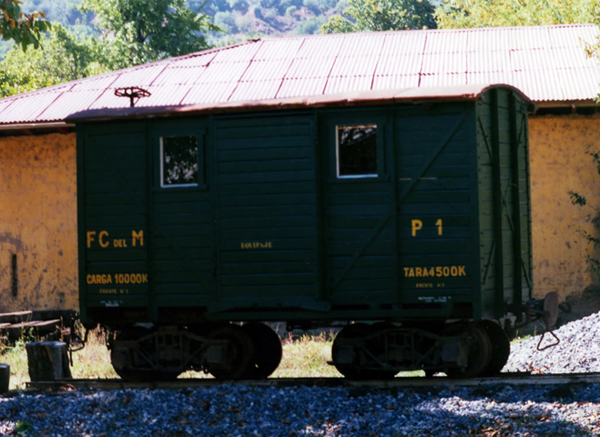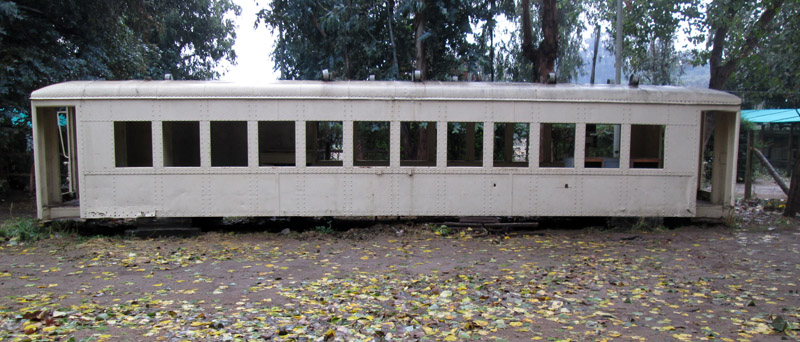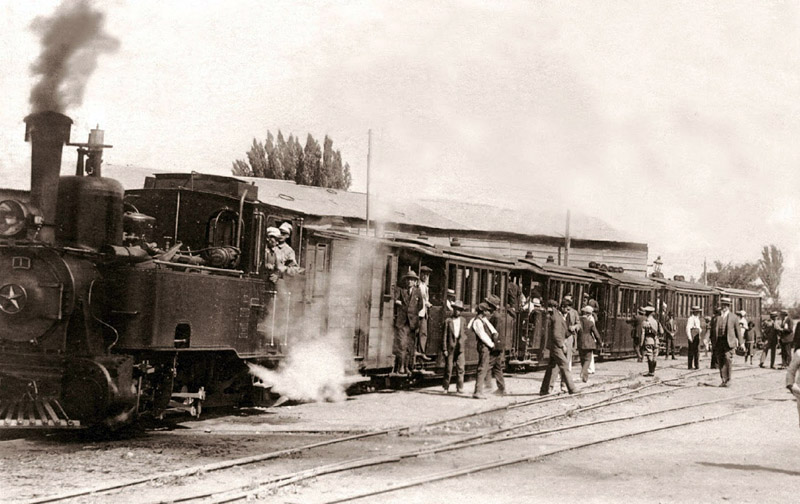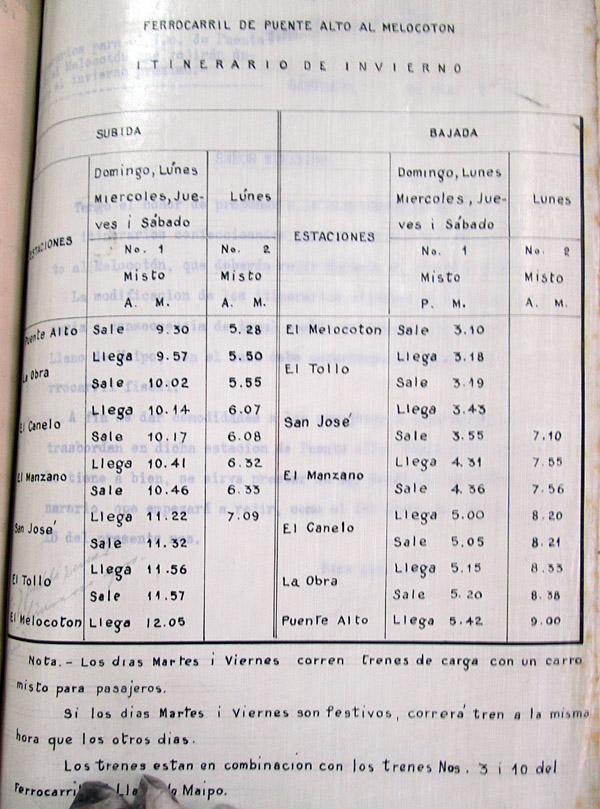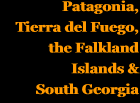 |
 |
 |
|||||||||||||||||
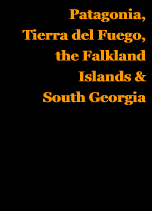 |
|||||||||||||||||||
 |
|||||||||||||||||||
The Puente Alto to El Volcán line, known as the FC Militar This was the first of the DOP's proposed 60cm gauge branches on which work began. Unlike the others it was handed to Chilean Army, to run as a long-term training exercise whilst at the same time functioning as a public passenger and freight carrying line. It was the closest to the capital, by a large margin, and was also the longest-lived of the five 60cm gauge routes, only closing in 1978. The map below shows the route paralleling the Río Maipo from Puente Alto, first as a black line to El Cañelo which was the first section to be opened, and then as a red line continuing up the Cajón del Maipo towards El Volcán on the right-hand-side of the map. Originally there was to have been an extension westward to San Bernardo on the main broad gauge route south of Santiago. However, this proposal was revised as a broad gauge branch and then was abandoned altogether. A larger version of this map is displayed on an appendix page.
Construction A photo taken during the building of the middle section by Corte y Cia.
The new alignment appears to be complete. The building in the far left background may be the station building at La Obra.
A sketch showing one of the standard stone-built piers for bridges crossing tributaries of the Río Maipo.
Almost certainly the following photo shows the terminus at El Volcán, with its two road loco shed just beyond the station and goods shed buildings.
Locomotives In addition an 8 tonne 0-4-0T was offered for sale by Corte i Cía., contractors for the El Cañelo to El Melocotón section of the line, in May 1911 together with a couple of wagons. After the price for the loco had been negotiated down from $10,000 (Chilean pesos) to $4,900 the DOP recommended purchase [MOBR2703]. The DOP ordered new locomotives to assist in the construction and then to start regular operations on each of the 60cm gauge railways. These included Jung 0-6-2Ts (later to become EFE tipo a), Henschel and Jung 0-6-0Ts (later EFE tipo b), and a variety of smaller machines. Two 0-6-2Ts and one 0-6-0T came to Puente Alto. A pair of Jung 0-6-2Ts arrived whilst the railway was being constructed and operated under DOP auspices. These were Jung nos. 1306-7, ordered in October 1908, and of the design later designated tipo a on the EFE. They were initially numbered and named 1 'PRESIDENTE MONTT' and 2 'ALBERTO MACKENNA' at Puente Alto. However, no. 1307 seems later to have been renumbered 4, and survived for many years under a roof at Puente Alto barracks as a museum-piece. It is today awaiting restoration at El Melocotón.
The DOP also purchased batches of slightly smaller 0-6-0T locos from Henschel and Jung. One of the first group, no. 3 'COLBÚN' came to Puente Alto, and seems to have worked there at least until the early 1920s and maybe much later.
The railway also gained an O&K 0-6-2T, probably largely built to the drawings of the Jung engines mentioned above. The photo below seems to show that machine, identifiable by the sloping tops to its side tanks and the flat-topped steam chests.
In 1914 the new military management of the railway purchased a batch of six small 0-8-0Ts from O&K in Germany. These seem to have been surprisingly small, perhaps working on the assumption that there were plenty of soldiers to be found work on the line. Two of the 0-8-0Ts double-head a troop train below.
In 1927 an O&K Meyer 0-6-6-0T loco was purchased, of substantially greater size and power than any of the earlier machines. This must have been a success, for it appears in many photos and survived at least until the arrival of the first diesels around 1954-5. Three similar Meyers were ordered ten years later, in 1938, but unfortunately they got caught up in the Second World War - never arriving in Chile but instead being set to work for the PKP in Poland.
This photograph puzzled many, for the locomotive has an American look to it. There was much speculation as to what this could have been.
An enlargement shows side tanks mounted well clear of the cab, as on the Baldwin 4-6-0Ts used by allied forces during the First World War.
Eventually, explorations by the author in the Archivo de la Administración in Santiago during 2013, revealed that there had been a shortage of motive power on the line during the Second World War, not least because the three O&K 0-6-6-0T Meyers ordered in 1938 had been trapped in Germany and had eventually been put to work in Poland. The railway had searched for suitable second-hand motive power closer to home, as had the EFE for their narrow gauge branches, and had discovered redundant 60 cm gauge 0-8-0Ts owned by the Lautaro Nitrate Co. up in the north of Chile. Two of these were Baldwins, as illustrated here. Whilst these are the most likely candidates for the loco seen above, it still seems as though the side tanks must have been replaced by smaller versions, for the tanks shown above seem shorter than those in the builder's photo below.
Also available from Lautaro Nitrate were a pair of O&K 0-8-0Ts with Klien-Lindner articulation. It is not known for certain that these were purchased for the FCM, but how else do we explain the engine shown below at San José de Maipo station? It is not one of the ex DOP 0-6-2Ts or 0-6-0T; nor is it one of the 1914 batch of six O&Ks. It is clearly of German origin and looks substantial enough to be an 0-8-0T.
The railway used at least two 'bus-carriles', of different design to those on the EFE narrow gauge lines. The builders and dates are as yet unknown. The numbers also have not yet been discovered.
In the early 1950s a batch of Deutz 2-4-0 diesels with jackshaft drive were purchased new. These were Deutz numbers 55551-55556 of 1954, type A8M517F.
These were succeeded by articulated Jung diesels, the majority of which still survive. Rolling stock The first Koppel-designed well frame coaches were almost identical to those on the Otavi line, to the extent of having a tropical double roof and open balconies - features better suited to the Namib desert than to southern Chile's cooler and wetter climates.
Goods stock also resembled closely that delivered to the OMEG in South West Africa, including these short vans. The example illustrated has been privately preserved.
Additional steel coaches were later bought from the local firm, Socometal. The shell of this one survives.
Operations Jung 0-6-2T no. 1, probably the loco originally named 'Presidente Montt', stands at Puente Alto on a long passenger train.
An early passenger timetable from when the line was only open as far as El Melocotón.
And another timetable sheet from the same period.
A view at El Volcán in the mid 1950s, showing that the O&K Meyer loco no. 7 (right, on train), survived at least until the arrival of the Deutz 2-4-0 diesels (example at left). Closure, and more recent developments There is also a group of volunteers attempting to resurrect part of the railway as a tourist attraction. They are based at El Melocotón station and run one of the Jung diesels with an original coach at weekends. At present they are limited to operating within the stations limits, but hope to gain permission to extend further. They have a Facebook page under the Proyecto Ave Fenix title. 23-2-2018 |
|||||||||||||||||||
Chapter 6
The Chiloe Island 60cm gauge railway
